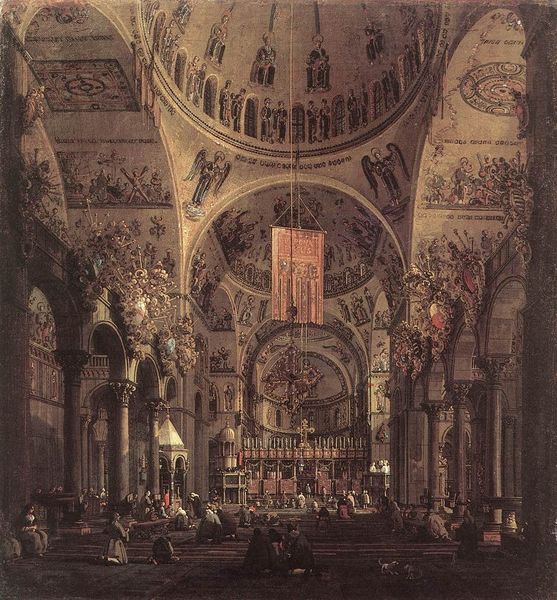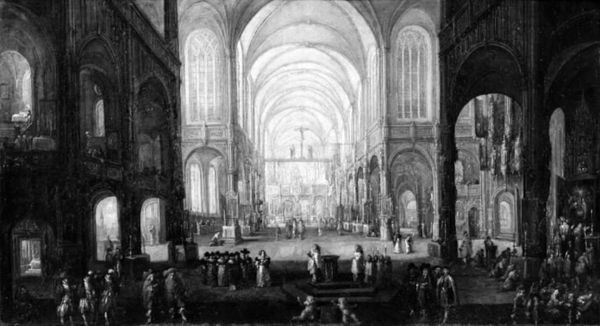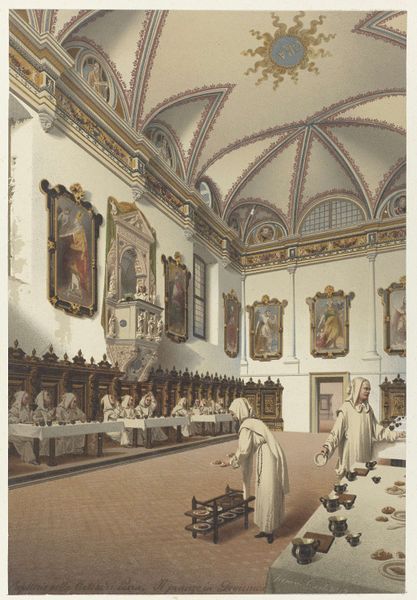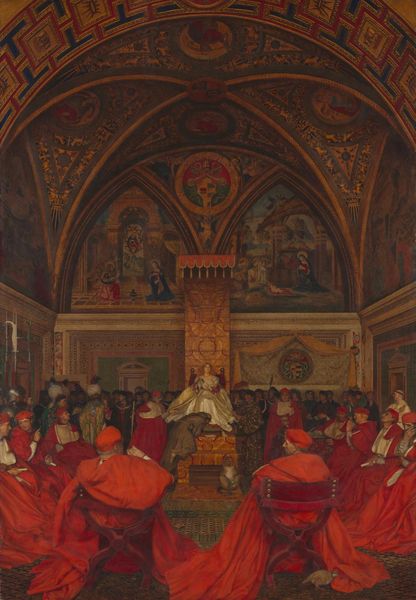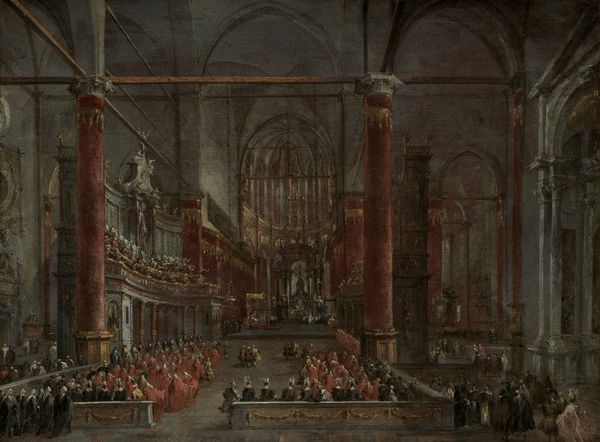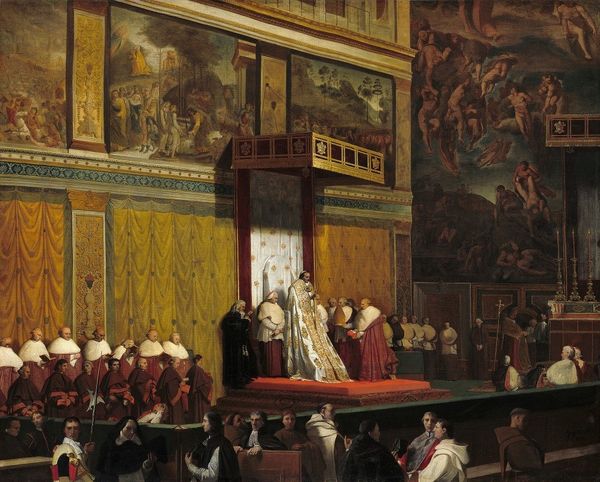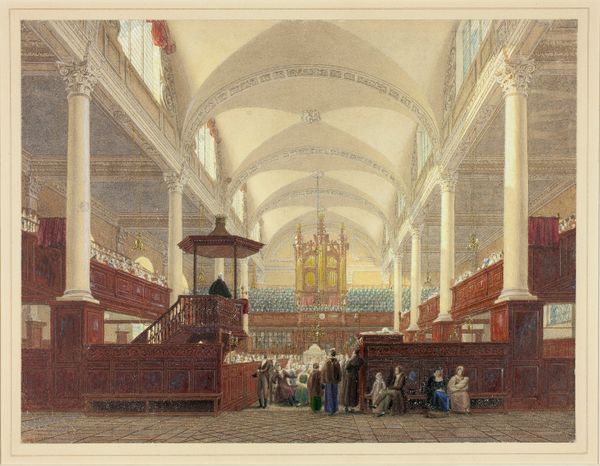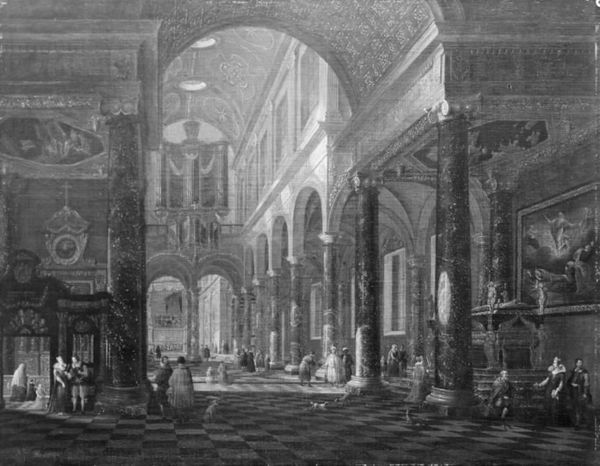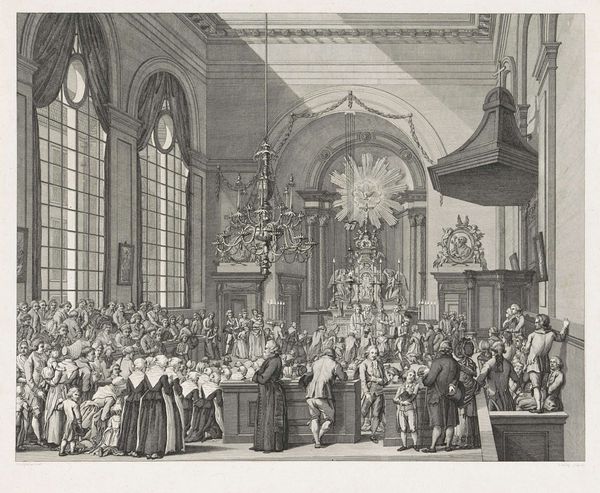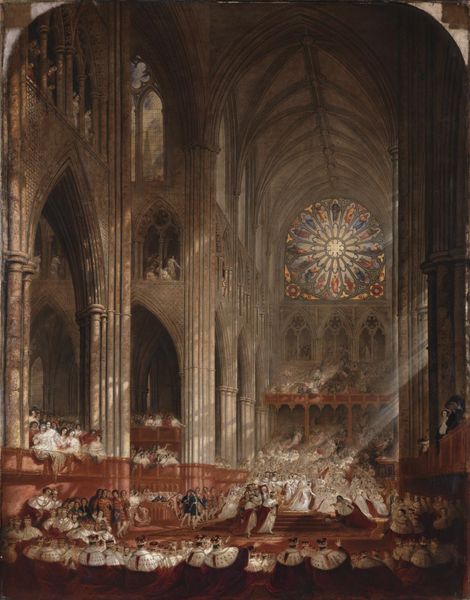
Copyright: Public domain
Editor: This is Luis Paret y Alcázar's "Jura de Fernando VII como príncipe de Asturias," an oil painting from 1791. It depicts a grand, ornate space filled with people, but the overall feeling is rather cold and formal. How do you interpret this work? Curator: The chilliness you perceive speaks volumes. Consider the painting’s context: it's a depiction of power, yes, but also of a monarchy on the cusp of enormous upheaval. The ceremony itself is staged within a highly controlled, even theatrical, setting. We need to ask: whose interests are being served by this performance? Who is included, and more importantly, who is excluded from this representation of power? Editor: So, it's less about the actual event and more about the image of the monarchy being projected? Curator: Exactly. Paret, even while seemingly documenting a historical moment, is constructing a narrative. Think about the meticulous detail given to the architecture versus the somewhat generic portrayal of the individual figures. Where does the painting invite your eye to linger and what does this highlight about its message? Consider the building in relationship to the historical moment of political struggle and social hierarchies in the lead up to the Napoleonic wars. How complicit do you consider the artist? Editor: It does seem like the grandeur of the architecture overshadows the people. And the whole thing feels incredibly… staged, almost as if everyone is performing their role. The details aren’t personal. Curator: Precisely! And who benefits from such rigid staging? The Crown. What is visible versus what remains hidden speaks volumes about power. By acknowledging that tension between spectacle and political reality, we move beyond simply admiring the painting's technical skill. We instead examine its role in perpetuating—or perhaps, even subtly questioning—the power dynamics of its time. Editor: I never considered the idea of looking at this image from a contemporary, theoretical perspective. It changes everything. Curator: Indeed. Art doesn’t exist in a vacuum. Engaging with art history alongside current theory reveals so much more about the conversations artworks can stimulate.
Comments
No comments
Be the first to comment and join the conversation on the ultimate creative platform.
